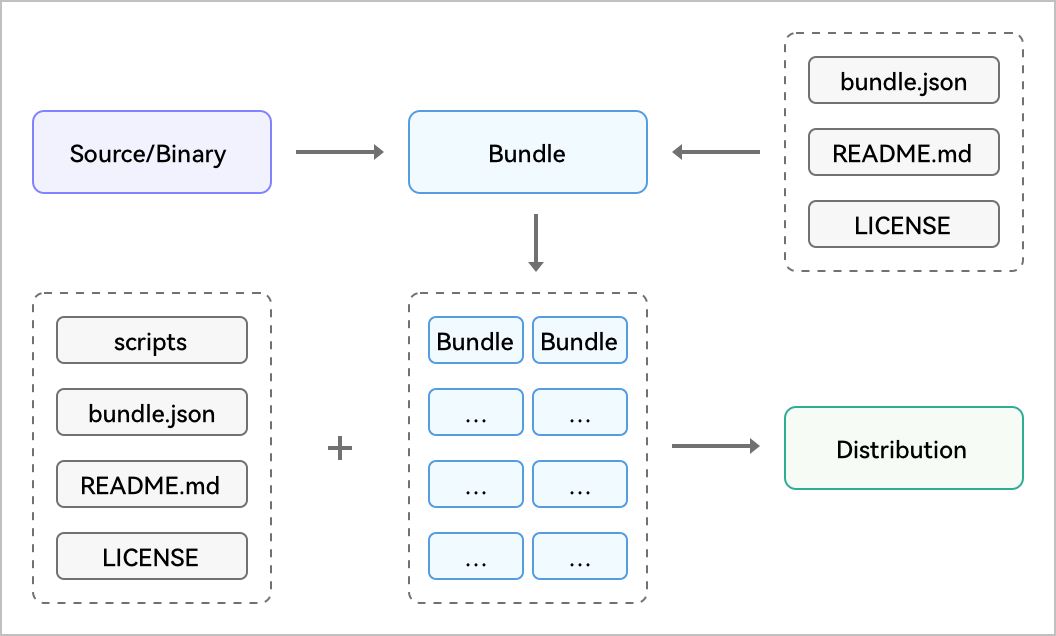Overview
This section describes the bundle-specific concepts in HarmonyOS. It uses an example to step you through how to create, develop, build, release, and install a bundle using the hpm-cli tool.
Bundle
A bundle is a term used in HarmonyOS to indicate a distribution. A bundle is equivalent to a package and it usually contains the following contents:
- Distributed binary file (binary type)
- Distributed source code file (source code/code snippet type)
- Build script (distribution type)
- Bundle description files:
- bundle.json: metadata declaration (name, version, dependency, etc.)
- LICENSE: license agreement
- README.md: readme file
- CHANGELOG.md: change log (optional)
NOTE: Bundles can be classified into the following types: binary, source code, code snippet, template, plug-in, distribution, and so on. A bundle can depend on other bundles. The dependency relationship can be represented by a directed acyclic graph (DAG).
After you release a bundle on the HPM platform, other developers can download, install, and use the bundle through the HarmonyOS Package Manager (hpm).
A bundle must be uniquely named in the format @scope/name in the namespace. Independent evolution is supported for each bundle.
Distribution
A distribution is a complete HarmonyOS release that integrates various bundles, including drivers, kernels, frameworks, and applications. A distribution can also be distributed on the HPM platform through bundles.
NOTE: The metadata of a distribution describes only the dependent bundles and build script compilation methods. It does not cover binary images of the distribution. When downloading a distribution, you also need to download the dependent bundles. You can obtain the system image file for burning only after finishing installation and compilation. A distribution is inheritable. Specifically, you can add bundles to or delete bundles from an existing distribution to create your own distribution.
Figure 1 Relationship between bundles and a distribution
